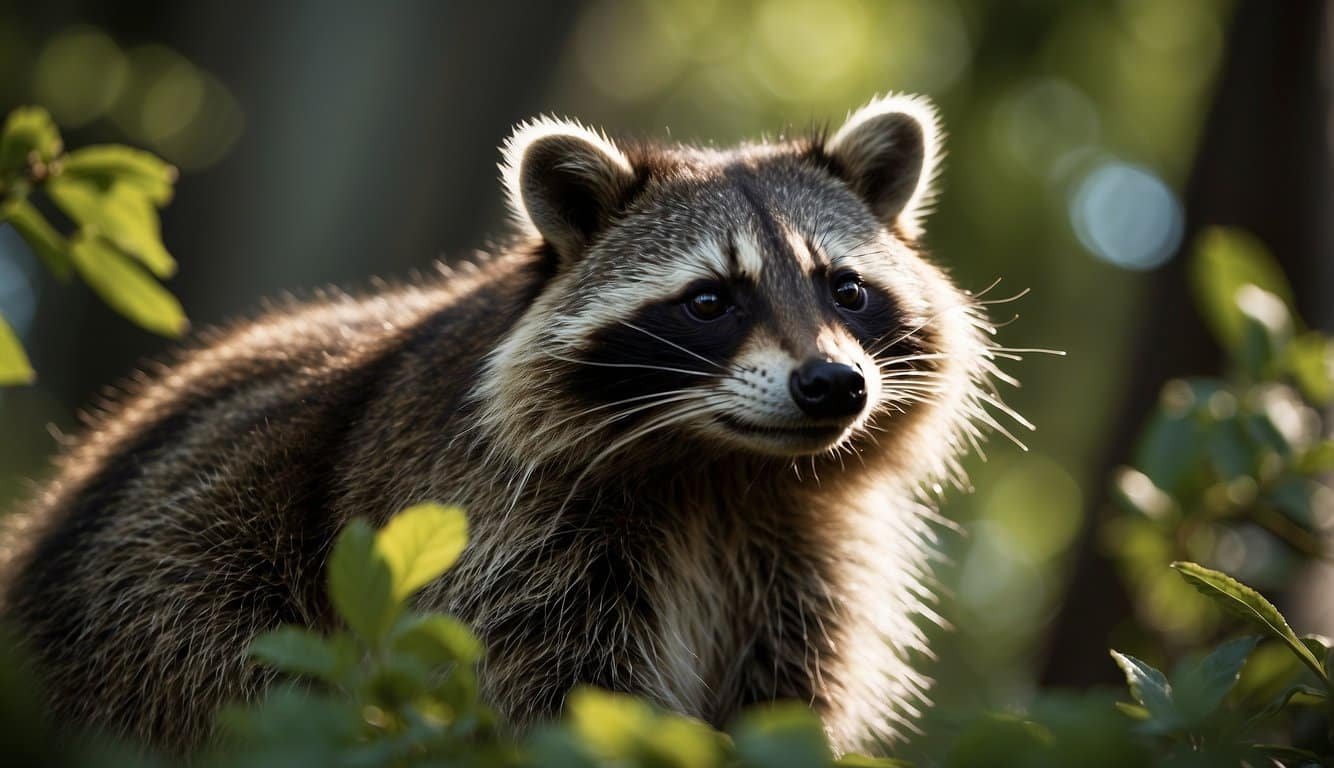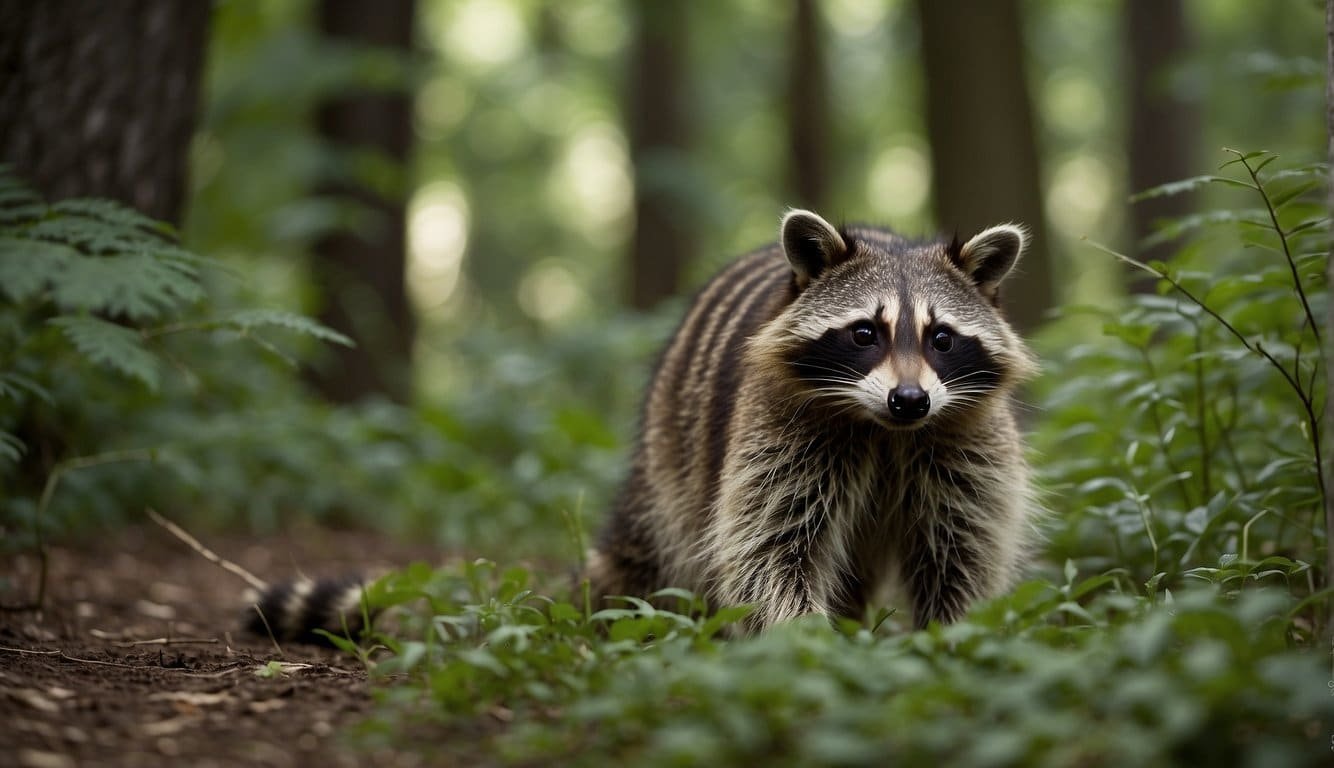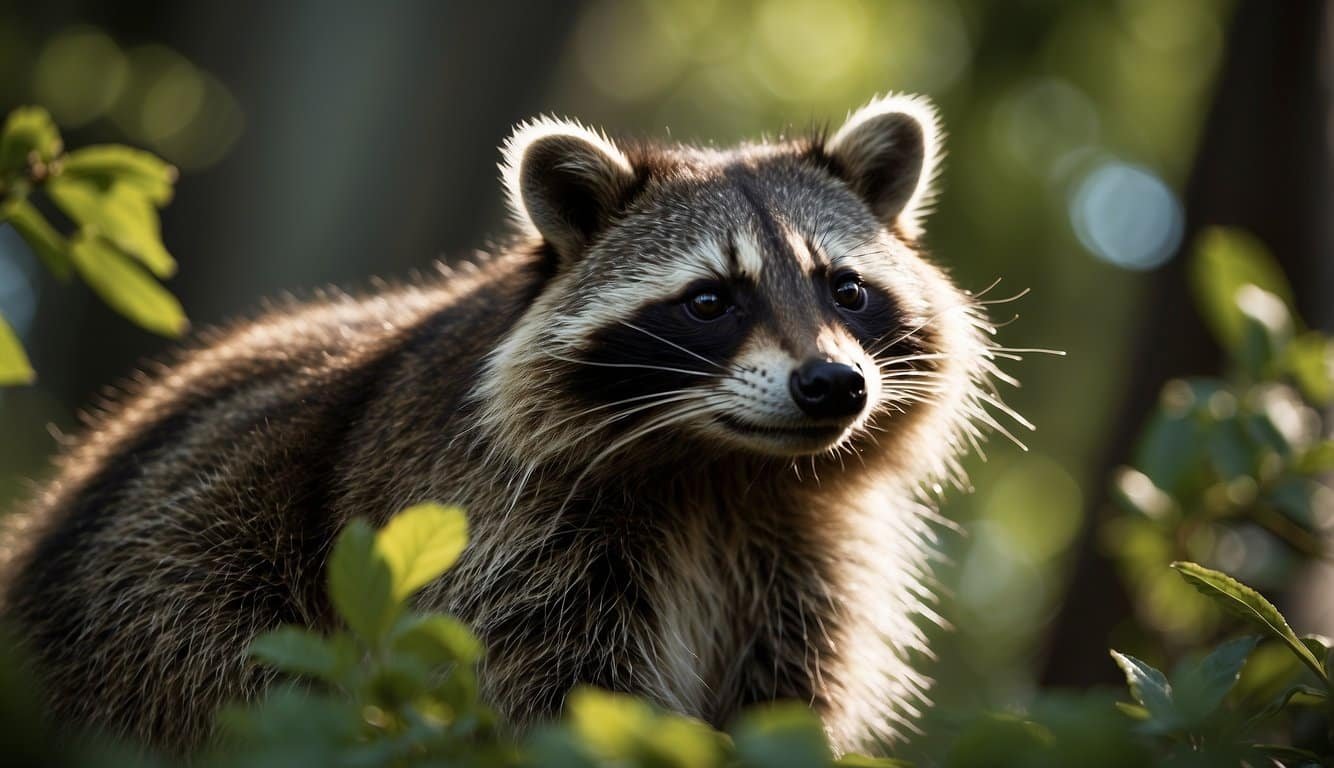Raccoon Basics
Raccoons, scientifically known as Procyon lotor, belong to the family Procyonidae. These medium-sized mammals are easily recognized by their distinct mask of black fur around their eyes and bushy tails with anywhere from four to ten black bands. Their dense fur is usually a combination of gray, brown, and black.
Originally from North America, raccoons have since expanded their range to South America and are present throughout Canada, adapting to various environments. They hold a Least Concern status on the IUCN Red List due to their wide distribution and large population, with the average raccoon population in Canada being estimated at about 1 million individuals.
Raccoons are omnivores, with diets that can include fruits, plants, nuts, berries, insects, rodents, and even small amphibians. They have nimble front paws and are known for their intelligence and curiosity, often getting into trash cans and clawing at potential food sources.
These animals are primarily nocturnal and tend to be solitary, with females being more sociable during the breeding season. Regarding their lifespan, raccoons in the wild have an average life span of about 2-3 years, although individuals in captivity can live up to 20 years.
Common names for the raccoon include Common Raccoon, Northern Raccoon, and North American Raccoon. Part of the Genus Procyon, this species reflects the classic image of the mischievous and resourceful animal found throughout various habitats from forests to urban areas.
Habitat and Diet

Raccoons are remarkably adaptable creatures, thriving in a variety of environments and showcasing a diverse diet. They’re as comfortable in the deep woods as they are in our backyards, making their dining preferences as eclectic as their habitats.
Natural Habitat
Raccoons have a strong preference for forested areas that are near water sources such as rivers, streams, and lakes. They often make their homes in hollow trees, underground burrows, or brush piles. These natural environments offer an abundance of food options, including frogs, fish, and crustaceans. Even a raccoon’s nimble fingers, or “rings,” are perfectly adapted for foraging nuts, berries, and various plants in these areas.
Urban Adaptation
In urban areas, raccoons have shown an astonishing ability to adapt to the presence of humans. They often inhabit parks, residential neighborhoods, and even commercial buildings. Their intelligent and curious nature allows them to navigate the urban landscape effectively, sourcing food from trash bins, gardens, and sometimes even pet bowls. This ability to exploit new resources underscores their status as opportunistic survivors.
Feeding Habits
The raccoon diet is best described as opportunistic, feeding on a variety of food sources available in their environment. They are omnivores and have a diet that can include insects, eggs, and small birds when available in their natural habitat. However, raccoons are also known to be great swimmers, catching fish as a part of their aquatic diet. In the fall, their diet shifts more towards fruits and nuts, which they can skillfully extract with their dexterous paws. While in urban settings, raccoons have been known to feast on food waste or even the occasional offerings intended for pets.
Reproduction and Behavior

Raccoons have a complex mating behavior and raising their young involves intricate parental care. Their dexterous front paws and intelligence play a significant role in their behavioral patterns.
Mating Patterns
The mating season for raccoons typically occurs from January through March. During this period, males will expand their home ranges to seek out females. These animals are usually solitary, but this can change during the breeding season. Female raccoons will gestate their young for about 63 to 65 days. Successful mating can depend on various factors including the availability and competition for food resources, which has a direct influence on the reproductive strategies of different raccoon species such as the Crab-Eating Raccoon and the Cozumel Raccoon.
Rearing Kits
After the gestation period, a mother raccoon will give birth to a litter of typically two to five kits. The kits are altricial, meaning they are born blind and helpless and require considerable care from the mother. For several weeks, the mother remains in the den with her young, using her intelligence and dexterous paws to nurture and protect them. Young raccoons are usually weaned by 12 weeks and by fall, they are ready to forage and survive independently. Throughout this process, raccoons use various markings and their ringed tails for communication and identification. Interesting to note, local adaptations can be seen in different subspecies, such as those named after Powhatan, which show behavioral variability in relation to their environment and human development.

